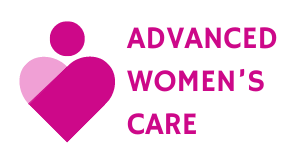C-Section Recovery
If you’ve had a cesarean delivery (C-section) and are recovering from a low transverse scar, you may have questions about the healing process, how to care for your scar, and what to expect in the weeks and months ahead. Understanding how to properly care for your incision and manage the physical and emotional aspects of recovery is essential for a smooth and successful healing process. In this guide, we’ll explore everything you need to know about recovering from a low transverse cesarean scar, including tips for scar care, signs of complications, and how to regain strength and mobility.
A low transverse cesarean scar refers to the incision made in the lower part of your abdomen, typically just above the pubic area. This is the most common type of C-section incision and is made horizontally across the belly. It is often preferred because it is associated with a lower risk of complications and less visible scarring compared to vertical incisions. The low transverse incision allows for better healing and less discomfort during recovery.
Initial Post-C-Section Recovery
The first few days after your C-section will focus on managing pain, reducing swelling, and preventing complications. Here’s what to expect during the early stages of recovery:
Hospital Stay: After a C-section, you’ll likely stay in the hospital for about 2–4 days. During this time, medical staff will monitor your incision, help with pain management, and ensure that you’re able to move around safely. You’ll also receive instructions on caring for your incision and taking any prescribed medications.
Pain and Discomfort: It’s normal to experience some discomfort or soreness in the area around your incision for the first few weeks. Your doctor may prescribe pain medications to help you manage this. Over-the-counter pain relievers like ibuprofen or acetaminophen can also be helpful.
Rest and Hydration: Adequate rest and hydration are essential for your body to heal. Make sure to drink plenty of water, eat nutritious foods, and get as much rest as possible to support your recovery.

Caring for Your Low Transverse Scar
Proper scar care is essential to ensure proper healing and reduce the risk of infection. Here are some tips for taking care of your low transverse cesarean scar:
Keep the Incision Clean and Dry: For the first few days after your surgery, your healthcare provider may recommend that you leave the dressing on your incision. Once it’s removed, gently clean the area with mild soap and water. Avoid scrubbing the incision, and gently pat it dry with a clean towel.
Avoid Heavy Lifting: Avoid lifting anything heavier than your baby in the first few weeks to reduce strain on the incision and support optimal healing. If you experience any pain or discomfort while lifting, stop immediately.
Watch for Signs of Infection: Keep an eye on your incision for signs of infection, such as increased redness, warmth, swelling, or discharge. If your incision becomes painful or if you have a fever, contact your healthcare provider.
Wear Loose Clothing: To avoid irritation or pressure on your incision, wear loose-fitting clothing and avoid tight waistbands or belts. Soft fabrics such as cotton can help reduce friction and allow the skin to breathe.
Massage the Scar (When Healed): Once your scar has fully healed (usually after 6–8 weeks), you can begin massaging the area to help improve the appearance and flexibility of the scar tissue. Gently massaging the scar with a moisturizing lotion or oil can help break down scar tissue and promote healing.
When to Seek Medical Help
While recovery from a low transverse cesarean scar is typically straightforward, there are a few signs that indicate you may need medical attention. Contact your healthcare provider if you experience:
- Excessive bleeding or discharge from the incision site
- Redness, warmth, or swelling around the incision
- Severe pain that doesn’t improve with medication
- Fever or chills
- A bulge or lump near the incision (which could indicate a hernia)
Regaining Strength and Mobility
As your body heals from your C-section, you may feel fatigued and weak. Rebuilding strength and mobility is an important part of recovery. Here are a few tips to help:
Gentle Movement: In the days following your C-section, it’s important to begin moving as soon as you feel able. Start with light activities like walking short distances around your home. This can help improve circulation and reduce the risk of blood clots.
Pelvic Floor Exercises: Kegel exercises are beneficial for strengthening your pelvic floor muscles, which can be weakened during pregnancy and childbirth. Start performing Kegels after your doctor clears you for exercise to help improve bladder control and support overall pelvic health.
Gradual Return to Exercise: After about 6 weeks, when your doctor gives you the green light, you can gradually start reintroducing more strenuous activities like walking, swimming, or low-impact exercises. Avoid high-impact exercises or abdominal exercises until you have fully healed.
Emotional Recovery
The recovery process from a C-section, including dealing with your low transverse scar, can also take an emotional toll. It’s normal to feel a range of emotions, including joy, exhaustion, and frustration. Here are some tips for emotional recovery:
Support System: Lean on your partner, family, or friends for help with everyday tasks during your recovery. Don’t hesitate to ask for assistance with baby care, household chores, or emotional support.
Talk About Your Feelings: If you’re struggling with any emotional or mental health issues, such as postpartum depression or anxiety, it’s important to talk to your doctor or a counselor. They can provide resources and treatment options to support your emotional well-being.
Celebrate Your Healing: Remember that your body has just gone through a major surgery, and it’s important to give yourself time to heal. Celebrate small victories in your recovery and be kind to yourself throughout the process.
Conclusion
Recovering from a low transverse cesarean scar takes time, but with proper care and attention, you will heal and regain strength. By following your doctor’s advice on scar care, managing pain, and gradually increasing activity, you can expect a smooth recovery process. Remember, it’s normal to feel fatigued and emotional as you recover, so don’t hesitate to reach out for support. If you have any concerns about your healing process or if you experience complications, contact your healthcare provider to ensure the best possible recovery. For more information on C-section recovery, or to consult with an expert, schedule an appointment with one of our healthcare providers today.
